rero
Joseph grand
from April 24 to June 5, 2021
The gallery will be exceptionally open on Sunday, May 30 from 2 pm to 6 pm with marais.guide
The gallery will participate to the Paris Gallery Weekend, from Thursday, June 3 to Sunday, June 6 from 11 am to 6pm.
All Black Cocktail All Day Saturday, June 5 from noon to 7pm.
\ du 24 avril au 5 juin 2021
La galerie sera exceptionnellement ouverte le dimanche 30 mai de 14h à 18h avec marais.guide
La galerie participera au Paris Gallery Weekend du jeudi 3 au dimanche 6 juin de 11h à 18h.
All Black Cocktail All Day samedi 5 juin de 12h à 19h.
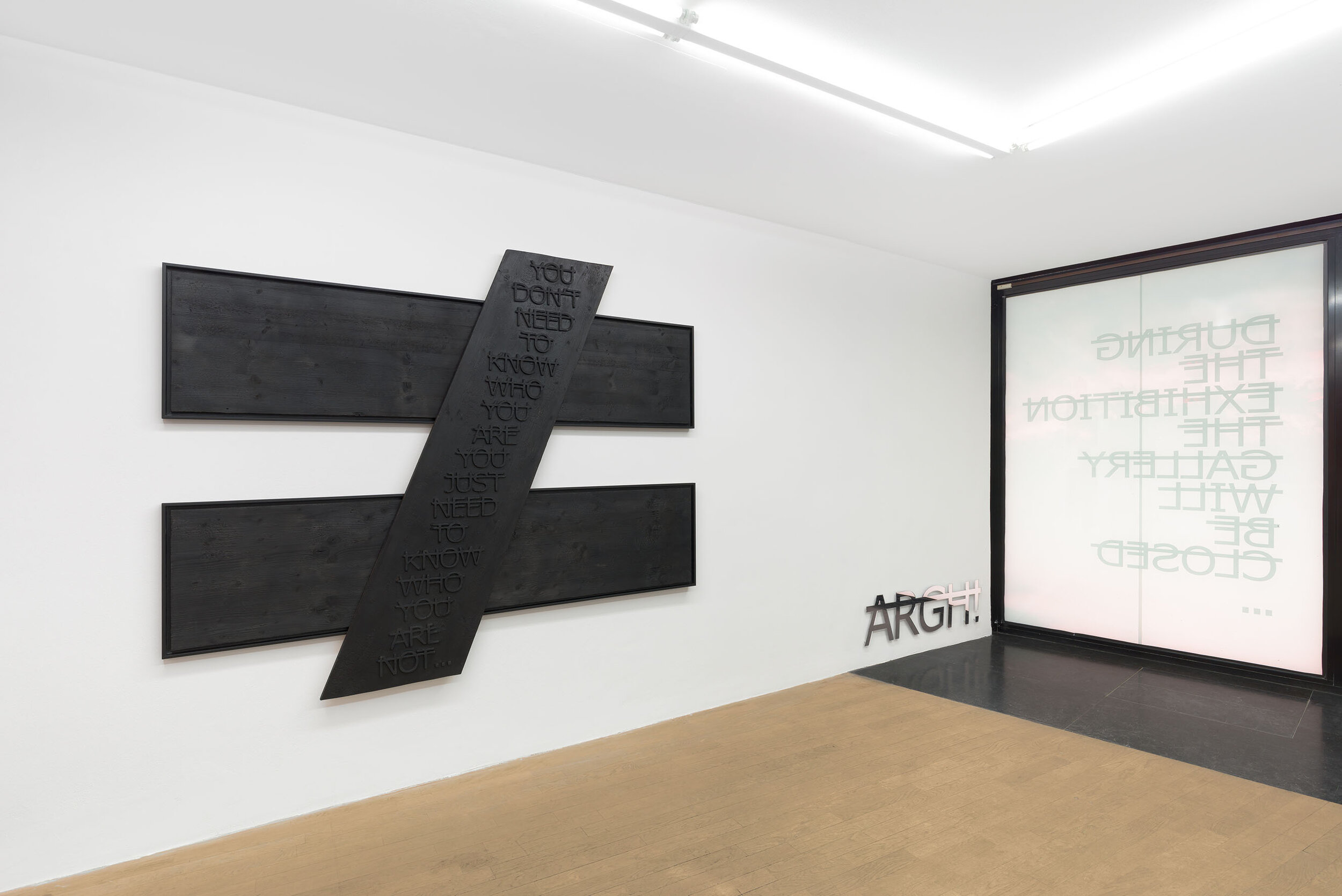

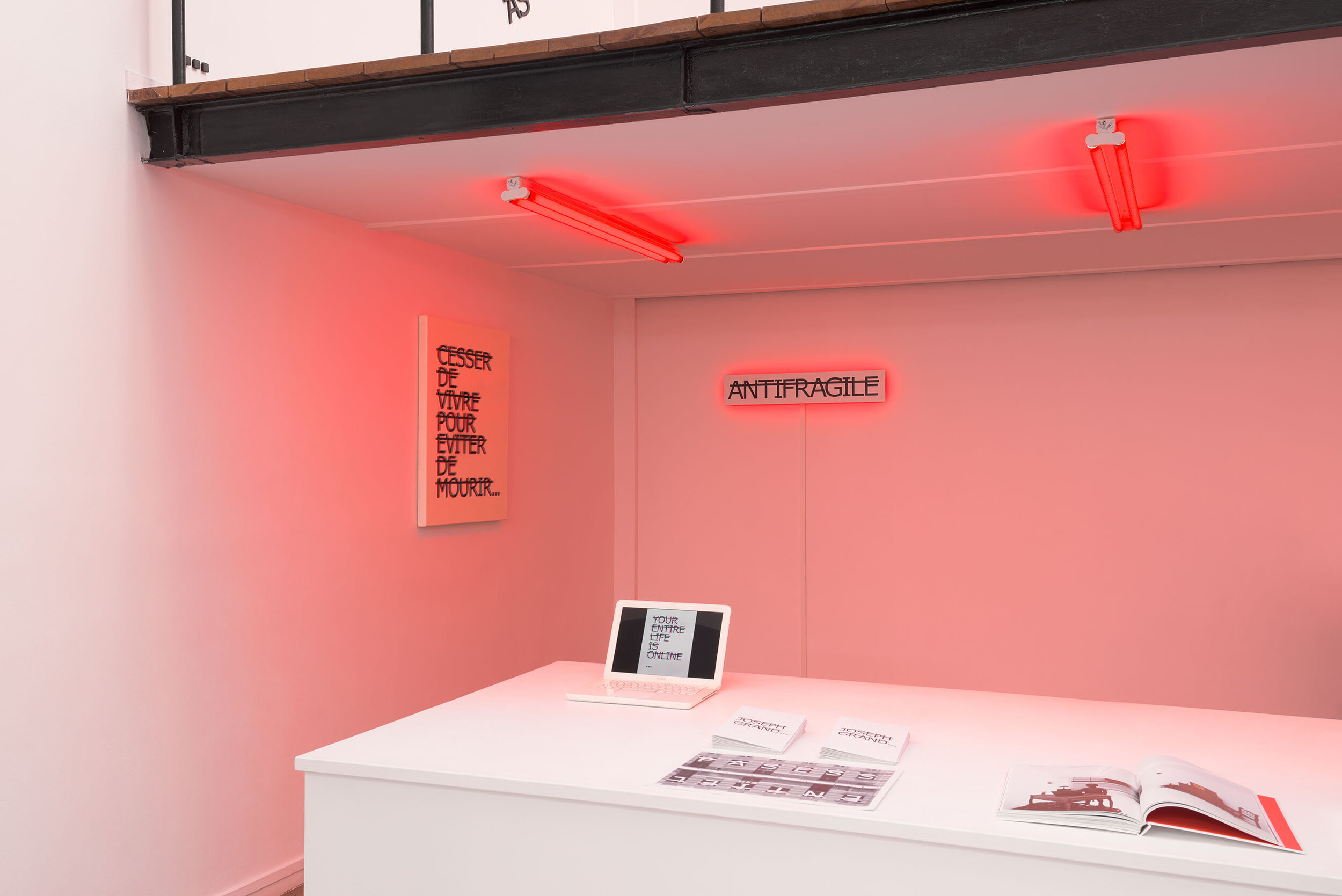
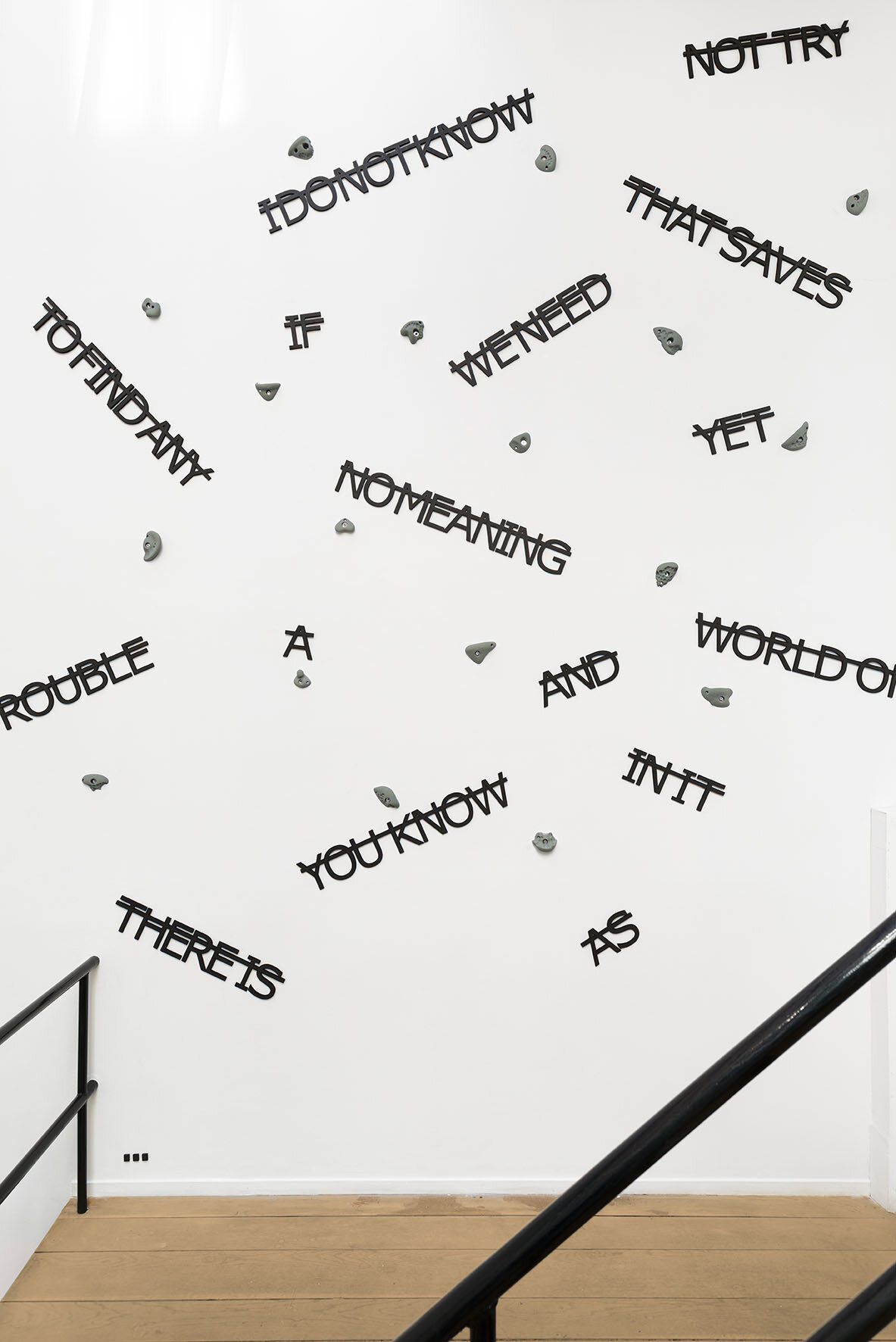

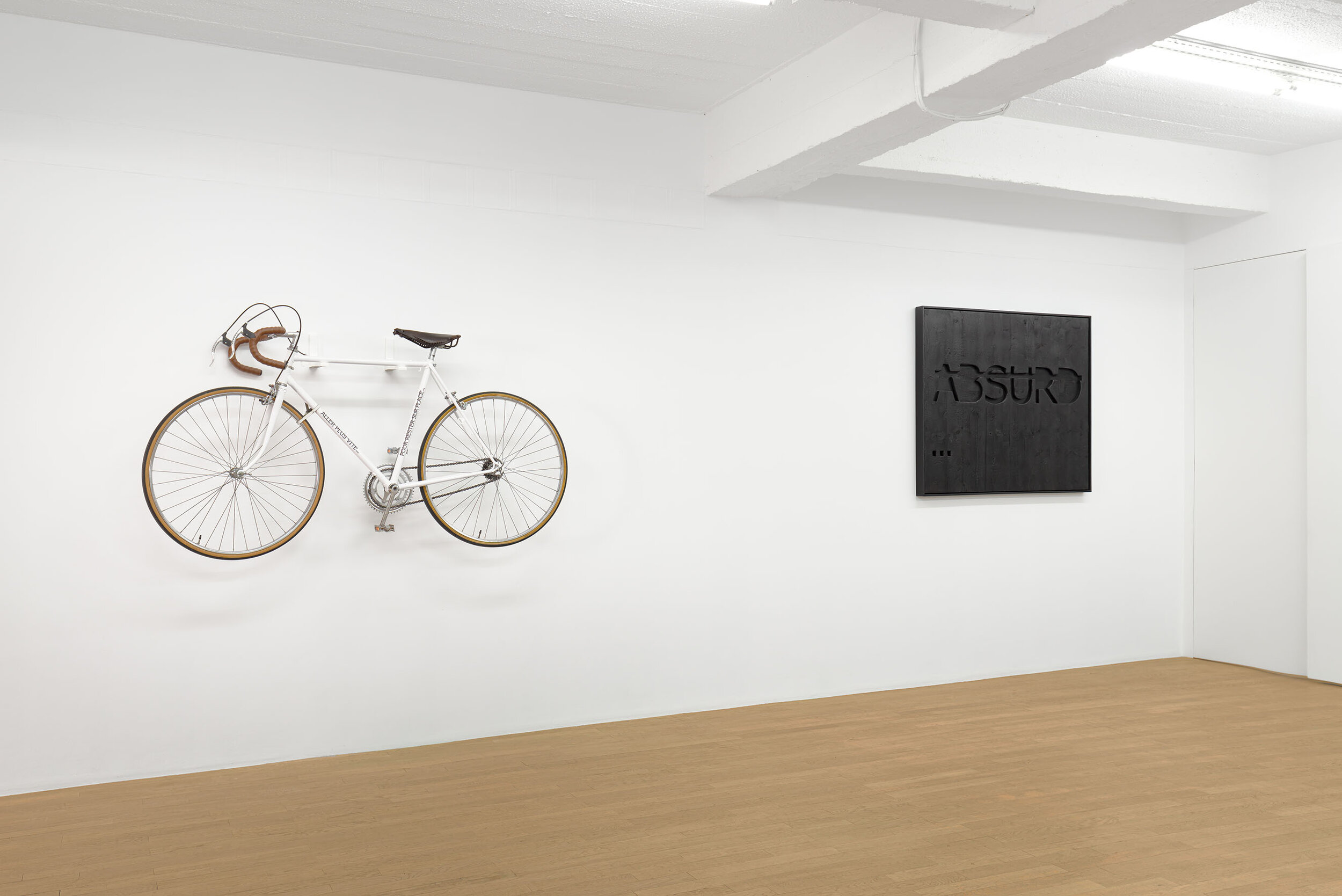
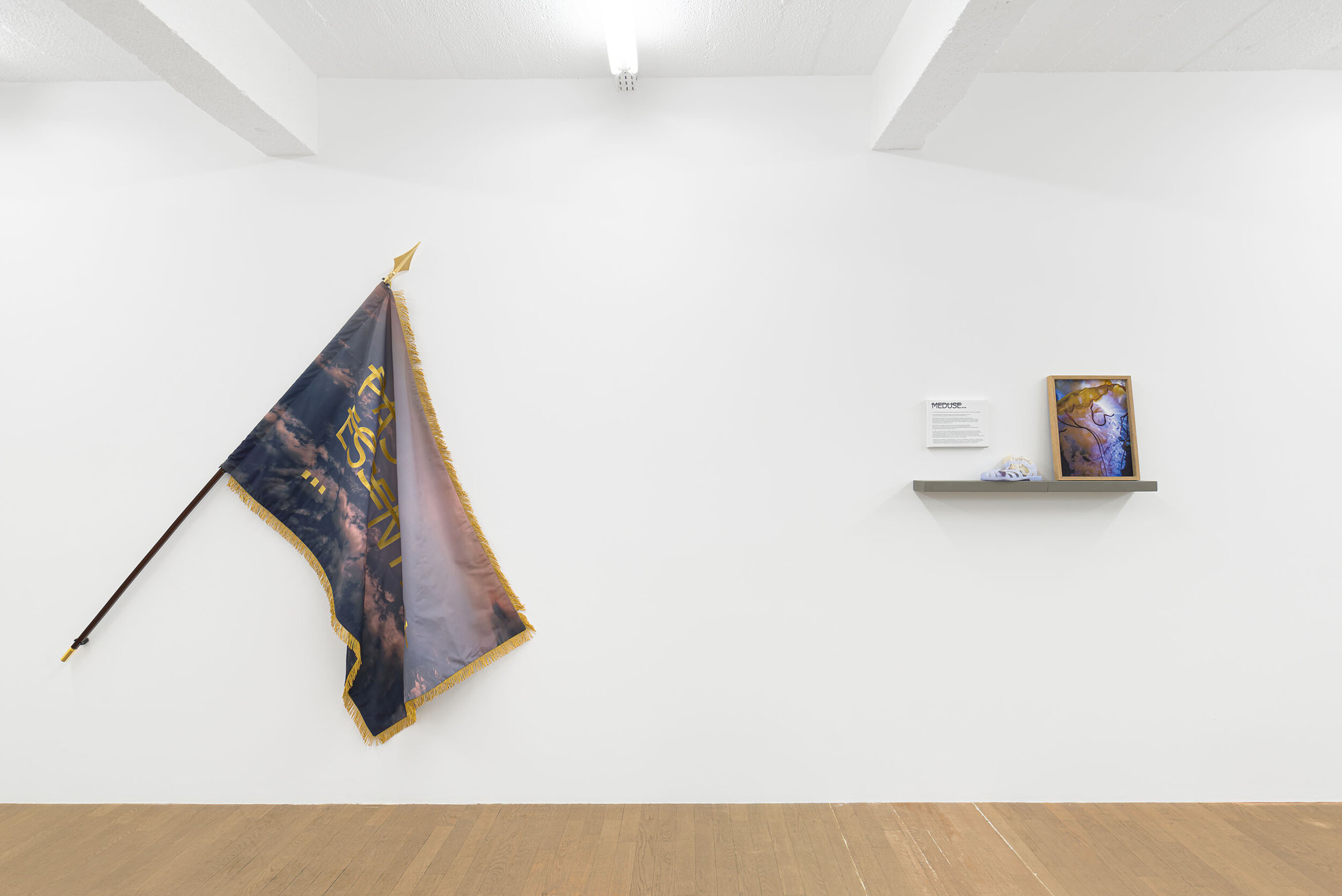
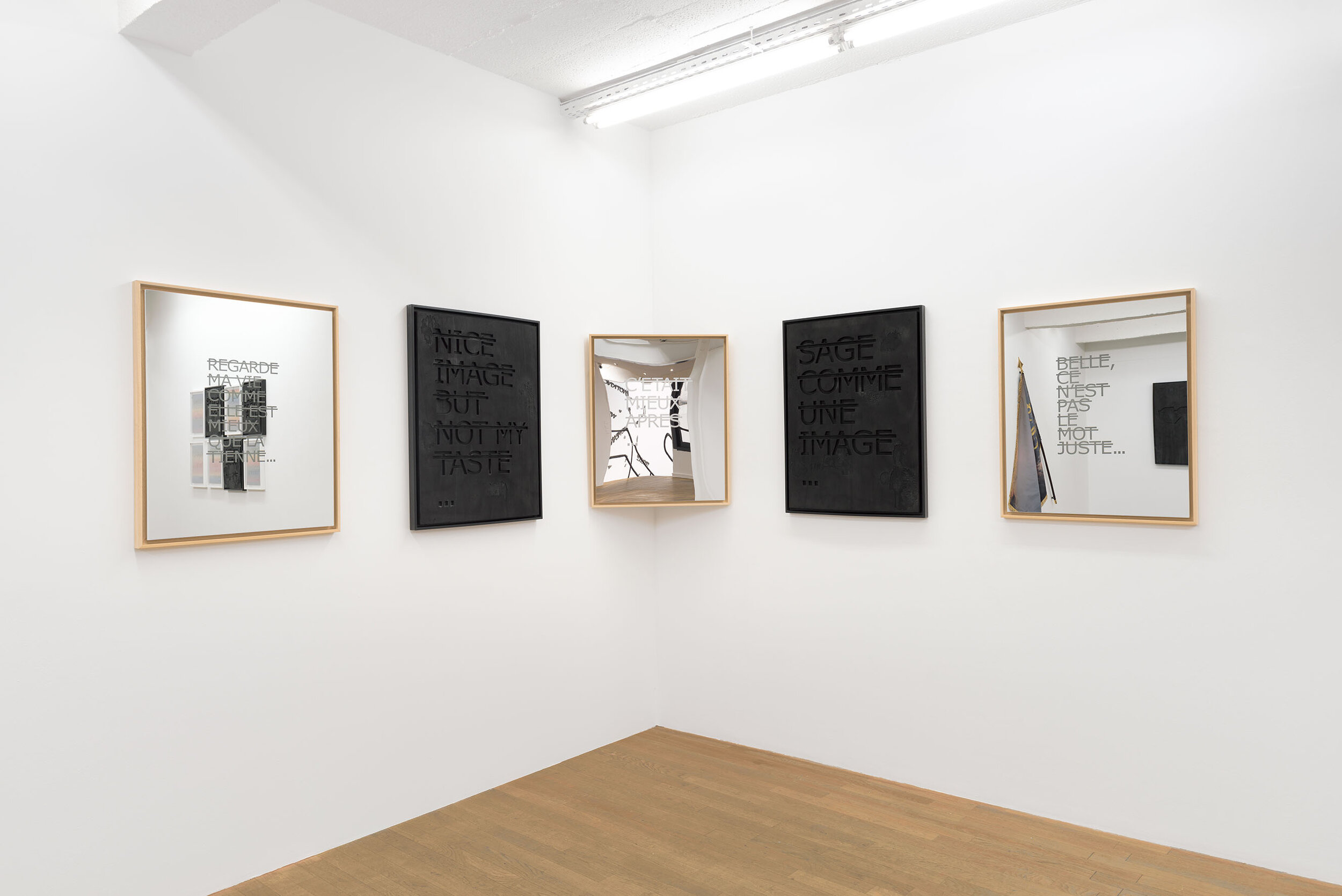
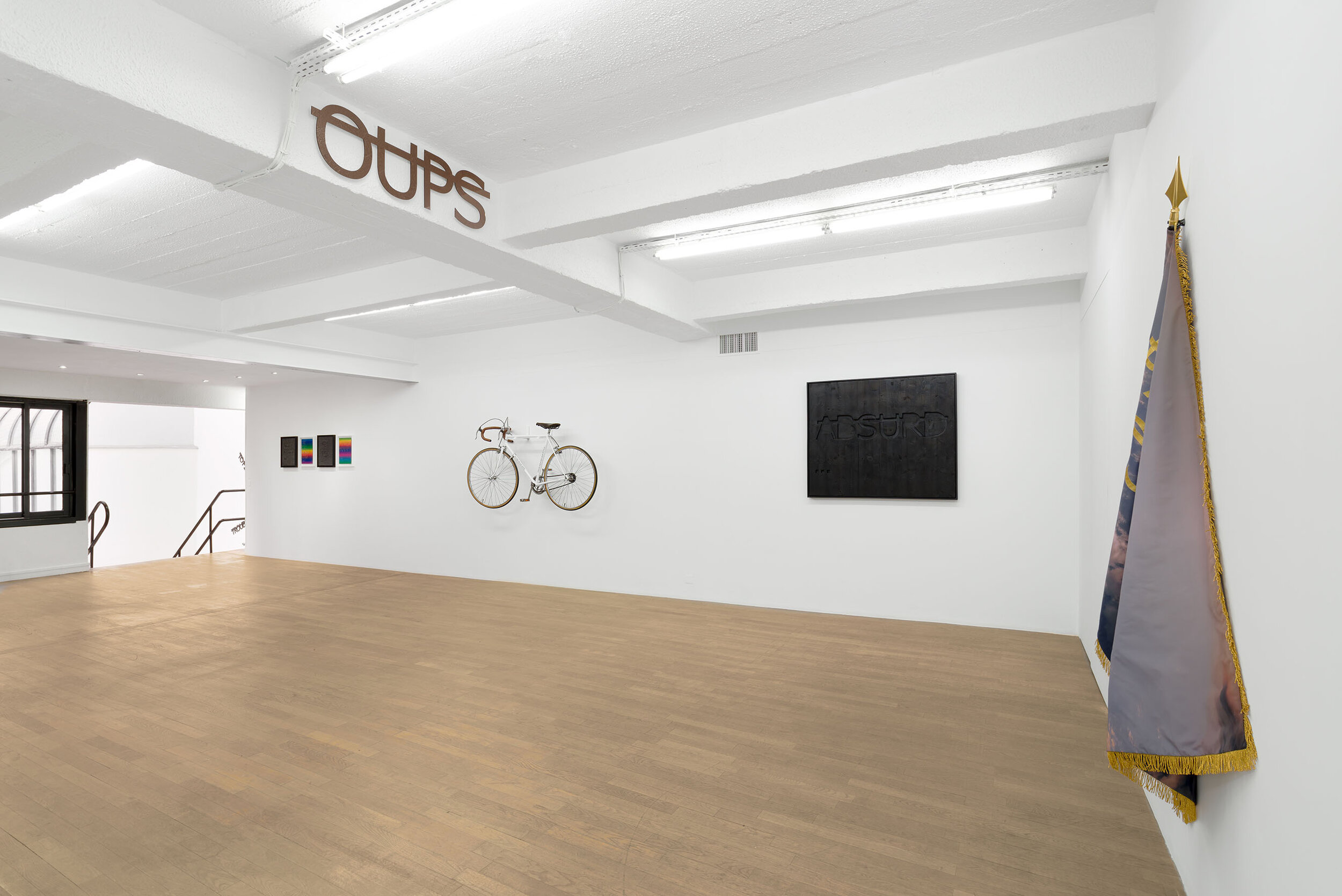
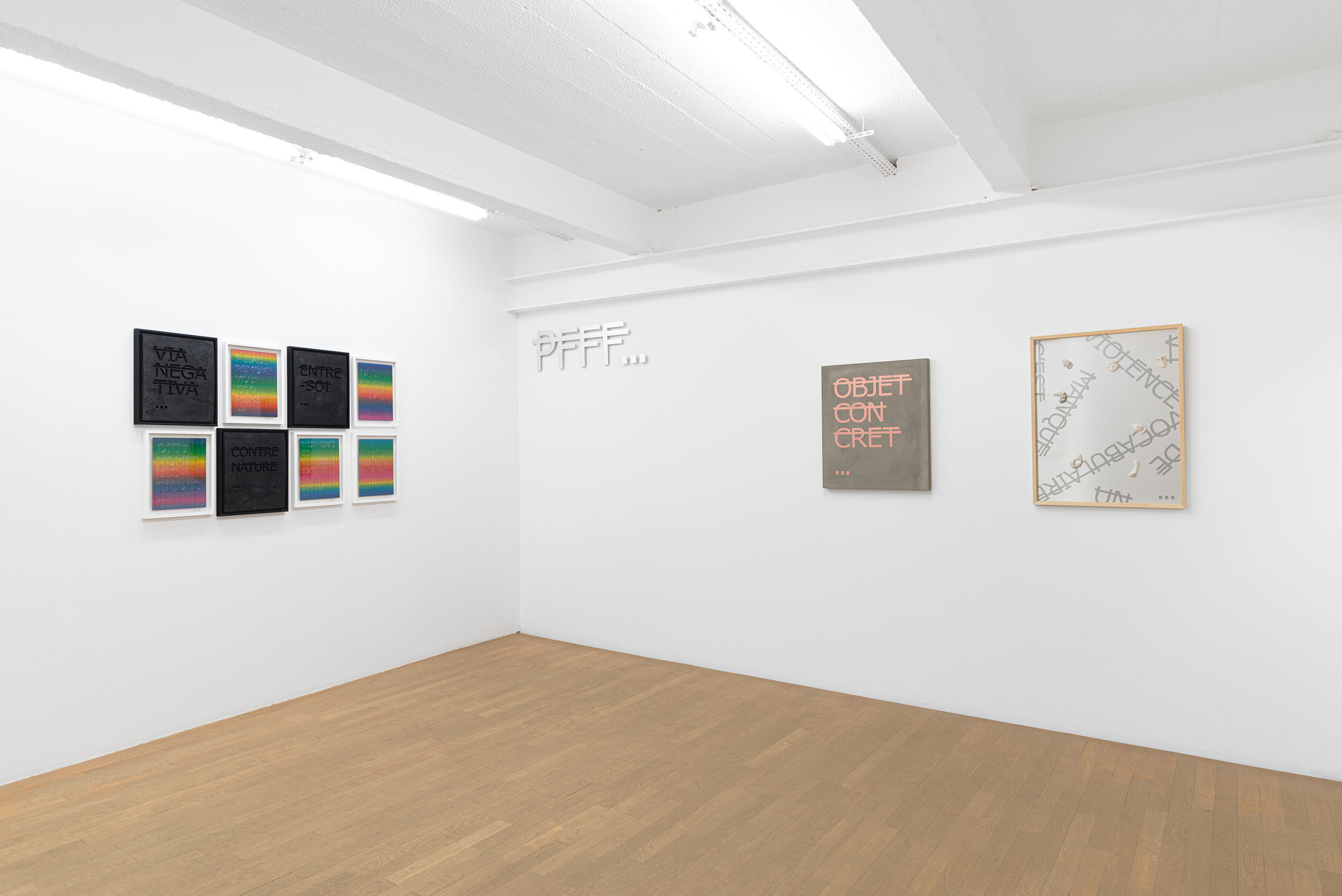
TEXTE EN FRANÇAIS CI-DESSOUS
The term resilience has featured heavily recently in the media and at conferences as part of discussions of the highly unusual situation we are facing today.
In order to access it, French artist Rero suggests the concept of Via Negativa, which is by no means a negative notion but rather a certain form of positivism in the face of scarcity, a sort of new minimalism the artist tries to apply to his life as well as his work.
We are all currently suffering from a general sense of deprivation, whether from a lack of contact, of work life or of freedom. With this new body of work, Rero suggests that we change our perspective and adapt in a more tangible way to this new and destabilising situation by means of two similar but slightly different concepts: the Via Negativa and antifragility.
Materialistically, the Via Negativa concept proposes a focus on the essential, on the intrinsically vital.
Philosophically, Nassim Nicholas Taleb's* notion of antifragility emphasises the Nietzschean “decomplexification” of an event. The negative factors that influence everything that is, or that constitutes, become a source of reinforcement and power, both physical and mental.
As such, the concept of antifragility differs from the notions of resilience (the ability to recover from failure) and robustness (the ability to resist failure), since external elements are no longer negatively experienced but accepted and transformed into positive principles.
With this sixth exhibition at Backslash, Rero thus continues to apply a philosophical vision to a body of works that are distinct from each other but all bound together by a single overall definition.
The title of the exhibition, however obscure it may seem, echoes the idea of the unnecessary superfluousness generated by the two concepts mentioned above. For Joseph Grand, one of the secondary characters in The Plague, getting rid of or, rather, avoiding what is unnecessary becomes a revelation when he finally writes the first sentence of his novel, ridding it of all superfluous adjectives.
Rero believes that this is what needs to be done in times of crisis, pandemic or emotional overload. When faced with an impasse or adversity, the essential once again becomes post-consumerist – or even pre-consumerist, if such a concept could be said to exist since the discovery of fire.
Rero's confrontation with a pandemic situation, whether contemporary or in the past as depicted by Albert Camus, whether taking the physical form of a virus or psychological shape of totalitarianism, is very interesting. How can we translate the feelings that these times give us through art?
Rero asks, perhaps unconsciously, the question of beauty as addressed by Luc Ferry in his essay on the meaning of beauty. Camus’ Joseph Grand removes the adjectives to reduce his sentence to the bare minimum, subject-verb-object. What about the words that define something and make it beautiful? Depriving an adjective of its poetry can amount to extinguishing it and confiscating the poetic notion. Can a work of art protect itself from all artifice?
The Via Negativa is an essential source of reflection for Rero. The new exhibition confronts us with brand new series of artworks inspired by techniques as diverse as Japanese raku, anaglyph paintings, works inspired by the chromatic field, a fresh approach to the burnt wood technique, and pieces made of mirrors. These series question our relationship to the essential and to the world, with the voice of Joseph Grand resonating and/or whispering as it accompanies each of the featured works. They also echo the installations the artist is currently showing at the CentQuatre museum in Paris as well as the Aquarium de Paris from 27th May.
From Rio de Janeiro to Paris, French artist Rero has crafted an artistic identity rooted in his famous letters in Verdana font crossed out with a thick black line. His work has been exhibited in a wide range of museums throughout the world, including at the Centre Pompidou and Grand Palais in Paris, MAC/VAL in Vitry-sur-Seine, MAC in Bogota, Art Science Museum in Singapore and Caixa Cultural in Rio de Janeiro, Sao Paulo and Brasilia.
* A Lebanese-American writer, statistician and essayist specialized in probability epistemology and practitioner of financial mathematics.
\
Le terme résilience est beaucoup apparu, ces derniers temps, dans les médias ou les conférences à propos de la situation exceptionnelle à laquelle nous faisons aujourd'hui face.
Afin d’y accéder, l'artiste français Rero nous suggère la notion de Via Negativa qui n'est en aucun cas une notion négative mais plutôt une certaine forme de positivisme face au manque, sorte de nouveau minimalisme que l'artiste tente d'appliquer dans sa vie comme dans son œuvre.
Nous sommes actuellement tous en situation de manque général, qu'il s'agisse d'un manque de contact, de vie professionnelle, de liberté. Avec ce nouveau corpus d'œuvres, Rero propose de changer notre façon de voir et de s'adapter plus concrètement à une situation nouvelle et déstabilisante à travers deux concepts proches mais légèrement différents : la Via Negativa et l'anti-fragilité.
En terme matériel, le concept de Via Negativa propose de se concentrer sur l'essentiel, sur l'intrinsèquement vital.
En termes de pensée, la notion d'anti-fragilité de Nassim Nicholas Taleb* met l'accent sur la « décomplexification » nietzschéenne d'un événement. Les facteurs négatifs auxquels est soumis tout ce qui est, ou qui constitue, deviennent une source de renforcement et de puissance, à la fois physique et psychique. En ça, le concept d'anti-fragilité se distingue des idées de résilience (la capacité à se remettre d'un échec) ou de robustesse (la capacité de résister à l'échec), puisque les éléments extérieurs ne sont plus subis négativement mais acceptés et transformés en principes positifs.
Avec cette sixième exposition à Backslash, Rero continue donc d'apposer une vision philosophique à un ensemble d'œuvres distinctes les unes des autres mais toutes soudées par une unique définition d'ensemble.
Le titre même de l'exposition, si obscur soit-il, rejoint l'idée de superflu inutile généré par les deux concepts précédemment cités. Se débarrasser, ou plutôt éviter ce qui n'est pas nécessaire devient pour Joseph Grand, un des personnages secondaires de La peste, une révélation lorsqu'il finit par écrire la première phrase de son roman en la débarrassant de tout adjectif superfétatoire.
Selon Rero, voilà ce qu'il est nécessaire de faire en temps de crise, de pandémie ou encore de surcharge émotionnelle. Face à l'impasse, l'adversité, l'essentiel redevient post-consumériste ou même pré-consumériste, si ce concept a jamais existé depuis la découverte du feu.
La confrontation que Rero opère face à la situation pandémique, qu'elle soit contemporaine ou passée comme celle d'Albert Camus, qu'elle soit physique d'un virus ou psychique d'un totalitarisme, est très intéressante. Comment traduire les sentiments que ces époques nous procurent à travers l’art ?
Rero pose, peut-être inconsciemment, ici la question du beau telle qu'elle est abordée par Luc Ferry dans son essai sur le sens du beau. Le Joseph Grand de Camus supprime les adjectifs pour réduire sa phrase au strict nécessaire, sujet-verbe-complément. Quid des mots qui définissent quelque chose et qui le rendent beau ? Dénuer une poésie de tout adjectif peut revenir à l'anéantir et lui ôter cette notion poétique. Une œuvre d'art peut-elle se prémunir de tout artifice ?
La Via Negativa constitue pour Rero une source essentielle de réflexion. Cette nouvelle exposition propose de nous y confronter avec des nouvelles séries inédites d’œuvres inspirées de techniques aussi diverses que le Raku japonais, des peintures en anaglyphe, des œuvres inspirées du champ chromatique, une nouvelle approche de la technique du bois brulé ou encore des pièces faites de miroirs. Ces nouvelles séries questionnent notre rapport à l’essentiel et notre rapport au monde, avec la voix de Joseph Grand qui résonne et/ou murmure auprès de chacune des œuvres présentées. Elles font également écho aux installations que l'artiste présente actuellement au CentQuatre ainsi qu'à l'Aquarium de Paris à partir du 27 mai prochain.
Entre Rio de Janeiro et Paris, l'artiste français Rero déploie son identité artistique à travers sa fameuse police verdana barrée d'un épais trait noir. Son travail a été exposé dans de nombreuses institutions à travers le monde, notamment au Centre Pompidou, au Grand Palais, au MAC/VAL, au MAC de Bogota, au Art Science Museum de Singapour ou encore à la Caixa Cultural à Rio de Janeiro, Sao Paulo et Brasilia.
* écrivain, statisticien et essayiste libano-américain spécialisé en épistémologie des probabilités et praticien en mathématiques financières.
PRESS \ PRESSE
Magali Lesauvage et Marine Vazzoler, “Artistes et NFT : du rejet à l’usage militant”, Le Quotidien de l’Art, 2022
“Immens(lim)ité”, Aquarium de Paris, 2021
Interview, Culture Prime, 2021
Clémence Buisson, “La nouvelle expo de Rero à Backslash”, Artistik Rezo, 2021
